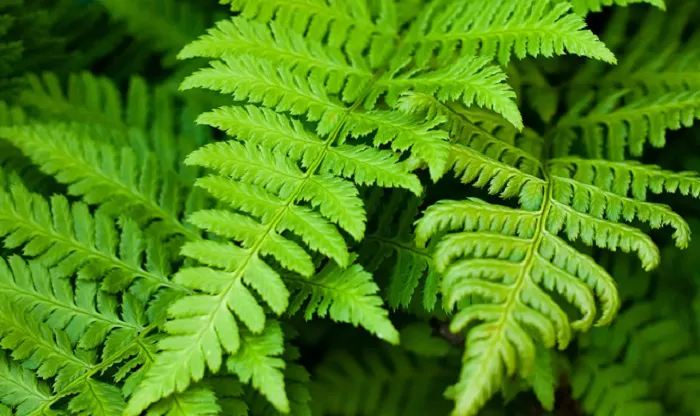Ferns are among the most ancient and fascinating plants on Earth. These lush, green wonders have thrived for over 360 million years, long before the first dinosaurs roamed the planet. With their delicate fronds and ability to thrive in diverse environments, ferns add a touch of natural elegance to any garden or indoor space. From the forest floor to the cozy corners of a home, ferns offer a timeless beauty that connects us to the very roots of our planet’s history. In this article, we will explore the unique characteristics, types, and care tips for these captivating plants.
Characteristics of Ferns: A Closer Look
The Ancient Origins of Ferns
Ferns belong to a group of plants known as Pteridophytes, which are among the oldest vascular plants on Earth. Unlike flowering plants, ferns reproduce through spores rather than seeds. This ancient method of reproduction has allowed them to survive and adapt through countless millennia. Ferns can be found in a wide range of habitats, from dense rainforests to arid deserts, showcasing their remarkable resilience and adaptability.
The Structure of Ferns
Ferns are characterized by their unique structure. They typically consist of three main parts: the rhizome, the fronds, and the roots. The rhizome is the underground stem that stores nutrients and anchors the plant. The fronds, which are the leafy parts of the fern, come in various shapes and sizes, from delicate lace-like patterns to broad, sturdy leaves. The roots absorb water and nutrients from the soil, supporting the plant’s growth.
The Role of Ferns in Ecosystems
Ferns play a crucial role in ecosystems around the world. They help prevent soil erosion by stabilizing the ground with their extensive root systems. In forests, ferns provide shade and habitat for numerous small animals and insects. Additionally, they contribute to nutrient cycling by decomposing and enriching the soil. Their presence is often an indicator of a healthy and balanced ecosystem.
Types of Ferns: A Diverse Family
Common Fern Varieties for Gardens
When it comes to gardening, there are several popular fern varieties that are well-suited for outdoor spaces. The Boston Fern (Nephrolepis exaltata) is a classic choice, known for its arching fronds and ability to thrive in both shade and partial sun. It is an excellent option for hanging baskets or as a ground cover. The Maidenhair Fern (Adiantum), with its delicate, fan-shaped fronds, adds a touch of elegance to shaded garden beds. Its lacy appearance makes it a standout feature in any landscape.
Indoor Ferns: Bringing Nature Indoors
For those looking to bring the beauty of ferns indoors, several varieties are well-suited for indoor environments. The Bird’s Nest Fern (Asplenium nidus) is a popular choice, with its large, wavy fronds that resemble a bird’s nest. It thrives in bright, indirect light and adds a tropical feel to any room. The Staghorn Fern (Platycerium) is another intriguing option, with its unique antler-shaped fronds. It can be mounted on a wooden board or hung in a basket, making it a conversation piece in any home.
Rare and Exotic Ferns
Beyond the common varieties, there are many rare and exotic ferns that can add a touch of uniqueness to any collection. The Hart’s Tongue Fern (Asplenium scolopendrium) is a rare species with long, undivided fronds that resemble a tongue. It prefers moist, shaded environments and is often found in limestone crevices. The Tree Fern (Cyathea) is another fascinating variety, with a trunk-like stem and large, arching fronds. These ancient plants are often found in tropical rainforests and can add a dramatic, prehistoric feel to a garden.
Caring for Ferns: Tips for Success
Soil and Water Requirements
Proper care is essential for the health and longevity of ferns. Most ferns prefer well-draining, nutrient-rich soil. A mix of peat moss, perlite, and compost works well for both indoor and outdoor plants. When it comes to watering, ferns generally need to be kept consistently moist but not waterlogged. Overwatering can lead to root rot, while underwatering can cause the fronds to wilt. It is important to find the right balance based on the specific needs of the fern variety.
Light and Temperature Preferences
Light and temperature are also critical factors in fern care. Many ferns thrive in shaded or partially shaded areas, making them ideal for gardens with limited sunlight. However, some varieties, such as the Bird’s Nest Fern, can tolerate bright, indirect light. Temperature preferences vary, but most ferns do well in moderate climates with temperatures ranging from 60 to 75 degrees Fahrenheit. Indoor ferns should be kept away from drafts and extreme temperature fluctuations.
Pests and Diseases
Ferns are generally hardy plants, but they can be susceptible to certain pests and diseases. Common pests include aphids, mealybugs, and scale insects. Regularly inspecting the fronds and treating any infestations with insecticidal soap can help keep these pests at bay. Diseases such as fungal infections can occur in overly damp conditions, so proper air circulation and careful watering practices are essential for maintaining healthy plants.
Conclusion
Ferns are truly remarkable plants that offer a unique blend of beauty, history, and ecological importance. Whether you are a seasoned gardener or a beginner looking to add some greenery to your home, ferns provide endless possibilities for enhancing your space. By understanding their characteristics, exploring the diverse types available, and following proper care guidelines, you can enjoy the timeless charm of ferns for years to come.


